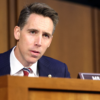As of today, the vast majority of American students have begun a new school year. As lunches are packed and carpool lines grow, Heritage reviews the good, bad, and ugly in education.
The Good
Support for school choice is at an all-time high. In a poll released in August, school choice favorability jumped 10 percentage points since last year, a sign that the proliferation of options such as vouchers, education savings accounts, and online learning is creating a welcome choice for families across the country.
The Daily Signal depends on the support of readers like you. Donate now
Options like the education savings accounts implemented in Arizona, statewide vouchers in effect in Louisiana, and tuition tax credits benefitting children in Florida provide families with greater control over education—something more and more parents are expressing they want.
Social promotion is becoming less popular. In North Carolina, legislators approved a measure to end social promotion. Rather than automatically passing students on to the next grade, all third-grade students will be required to read at grade level before advancing to the fourth grade. Other states that have implemented this policy suggest that it is helpful in boosting student achievement.
Online, customized learning is on the rise. Individualized online learning options allow more emphasis on areas where students are struggling, without holding back their peers who may be ready for the next level.
Teachers union membership is declining. The National Education Association is projecting a loss of 308,000 members since 2010. One of the union’s top officials, treasurer Becky Pringle, blames “stupid” education reform: “We’re living with a recession that just won’t end, political attacks that have turned brutal, and societal changes that are impacting us—from stupid education ‘reform’ to an explosion of technology—all coming together to impact us in ways that we had never anticipated.”
The Bad
The Administration is singling out minority students for government “help” instead of raising them up through increased options. Over the summer, President Obama signed an executive order to form the new White House Initiative on Educational Excellence for African Americans. According to the White House, the new initiative, which will work across federal agencies, “aims to ensure that all African American students receive an education that fully prepares them for high school graduation, college completion, and productive careers.”
Parents and taxpayers would be correct to be skeptical of a new Washington initiative to improve student outcomes. A new evaluation by Matthew Chingos of the Brookings Institution and Paul Peterson of Harvard shows a far more promising route to improving academic opportunity for the students the President’s initiative aims to help: school vouchers. The study of low-income students in New York City found a 24 percent increase in college enrollment among African-American students who were awarded and used vouchers to attend private schools.
This success has already proven the vital role of the D.C. Opportunity Scholarship Program. Students who have used vouchers to attend private schools in the nation’s capital have a 91 percent graduation rate, while graduation rates in D.C. public schools hover around 60 percent.
The Ugly
Average per-pupil spending in public schools is reaching historic highs. Nationally, average per-pupil spending exceeds $11,400 this year, meaning a child entering kindergarten today can expect to have no less than $148,000 spent on his or her education by the time the child graduates high school. In all, more than $570 billion will be spent on public K-12 education this year.
Continual increases in the money spent per child and in overall spending haven’t led to increases in academic achievement. Heritage’s Lindsey Burke notes:
We continue to fund institutions—sending that money to schools—instead of actually funding children. Imagine if a child could put those dollars in a funding “backpack” and take that $11,400 to any school—public, private, or virtual. As in every other sector of American life, we would likely see outcomes improve as a result of competitive pressure placed on the government school system.
Despite the successes of more individualized learning and school choice, the Obama Administration wants to further centralize education in Washington through national standards and tests. It has been trying to entice states with waivers from the onerous No Child Left Behind law, which it gives to states that agree to adopt the Administration’s standards instead.
Implementing Washington-controlled education standards means that states, local school boards, and ultimately parents will have less say in their children’s education. This year’s homework assignment for conservatives: continue the fight for increased parental control, individualized options for students, and decreased government interference in education.
Quick Hits:
- In the month of August, more than 103,000 refugees fled Syria—”almost doubling the total number of refugees from the previous 17 months combined,” CNN reports.
- Gas prices hit a record high for Labor Day yesterday.
- Vice President Joe Biden says Americans are “better off” than they were four years ago, and “if it weren’t so hot” at his campaign stop, he would have gone into detail.
- First Lady Michelle Obama will speak tonight at the Democratic National Convention in Charlotte, N.C.
- Where is the Obama Administration’s Spring 2012 regulatory agenda? By law, it’s supposed to be published by now—but the Administration is keeping mum on its plans for new regulations going into the election.






























